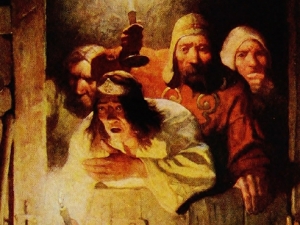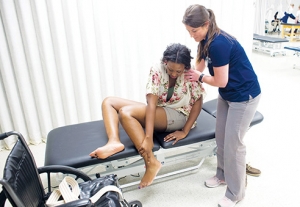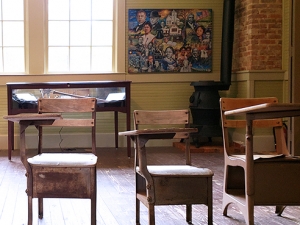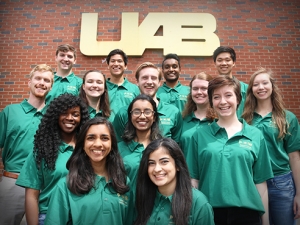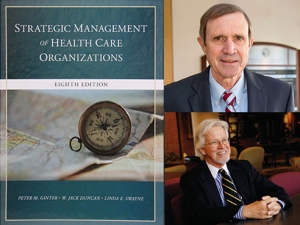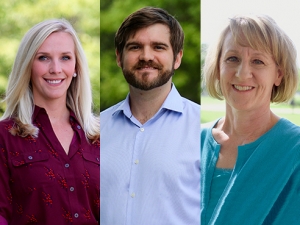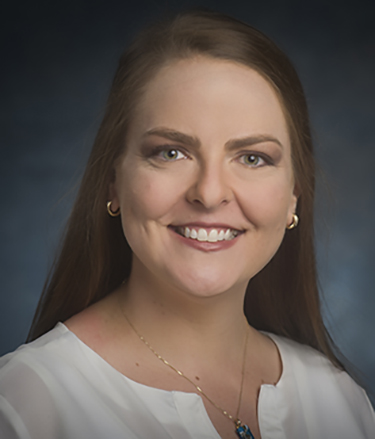 Assistant Professor Margaret Jay Jessee
Assistant Professor Margaret Jay Jessee
In spring 2017, women made up a little more than half of all students pursuing degrees in medicine, dentistry or optometry — a fact that, about 170 years ago, would have been inconceivable.
Although women had been practicing medicine for thousands of years as midwives and apothecaries, they were effectively excluded around 1847 when the American Medical Association established education and degree requirements for respectable, practicing doctors, although many U. S. medical school did not yet accept female students.
Even when those who had the means — typically middle-class white women — traveled to Europe to earn a medical degree, a career as a physician was not seen as a morally and socially upstanding choice for women, said Margaret Jay Jessee, Ph.D., assistant professor in the Department of English.
Still, social expectations weren’t the only obstacle for women who wanted to study medicine in the early 19th century; they also had to contest the way women medical practitioners were represented in contemporary literature, said Jessee, who began researching the topic last year.
Battle for perception
When women began entering medical school in the 1840s, they were not treated kindly in contemporary literature. Men of the era were writing sensationalized dime novels that portrayed women who practiced medicine as evil, greedy women, often of foreign descent, whose had one goal: provide dangerous, immoral abortions for scared and vulnerable Anglo-American women, Jessee said.
“In the early part of the 19th century before the Civil War, the term woman doctor was virtually synonymous with abortionist,” Jessee said.
| “Before the Civil War, the term woman doctor was virtually synonymous with abortionist.” |
Then a new group of women authors emerged in the 1870s, writing novels that depicted women physicians as morally upstanding professionals — a challenge to the negative characterization that persisted at the time. As these authors churned out a steady stream of sanitized literature in which women physicians were “middle-class, Anglo-American and feminine,” the perceptions changed, Jessee said.
Jessee is analyzing emotional responses to women physicians in the 19th century by studying literary depictions in her book project, “Murderess to Doctress: The Affective Legacy of the Abortionist in Nineteenth-Century American Literature.”
From fact to fiction
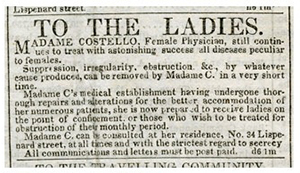 Women such as the self-proclaimed “female physician” Madame Costello advertised treatments that contributed to negative stereotypes.The origins of these associations with abortion are somewhat rooted in fact, Jessee said. In the early to mid-1800s, some women who practiced medicine would place newspaper ads that used euphemisms such as “French pills” or “lady pills,” both of which were expensive and advertised to “stop blockages” — meaning blockages of the menstrual cycle, Jessee said. These medicines usually incorporated natural poisons such as pennyroyal and could be fatal to the recipient. The practitioners often were referred to in the advertisements as “Madame,” which only reinforced Victorian stereotypes of foreign women.
Women such as the self-proclaimed “female physician” Madame Costello advertised treatments that contributed to negative stereotypes.The origins of these associations with abortion are somewhat rooted in fact, Jessee said. In the early to mid-1800s, some women who practiced medicine would place newspaper ads that used euphemisms such as “French pills” or “lady pills,” both of which were expensive and advertised to “stop blockages” — meaning blockages of the menstrual cycle, Jessee said. These medicines usually incorporated natural poisons such as pennyroyal and could be fatal to the recipient. The practitioners often were referred to in the advertisements as “Madame,” which only reinforced Victorian stereotypes of foreign women.
The expense of the medicines combined with the mortality rate for women who consumed them earned women who practiced medicine in the early 1800s reputations for greed and malevolence, Jessee said.
In literature of the era it was not uncommon for male authors to cast women doctors as essentially evil, calling them “hags,” “she-devils” and even “abortions to their own sex,” Jessee said.
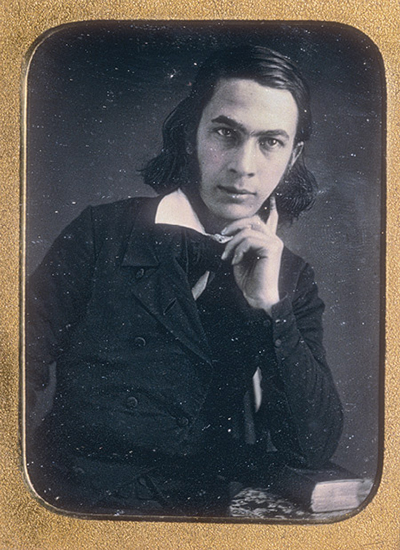 George Lippard, author of 1854 dime novel “New York: Its Upper Ten and Lower Million”
George Lippard, author of 1854 dime novel “New York: Its Upper Ten and Lower Million”
Consider this excerpt:
“Her name was one of those names which creep through society like the vague panic which foretells the pestilence,” wrote novelist George Lippard in his 1854 dime novel, “New York: Its Upper Ten and Lower Million,” which included reference to a woman physician commonly suspected to perform abortions. “That such a creature should exist, and grow rich in the city of New York, in the middle of the nineteenth century, by the pursuit of a traffic which, in its incredible infamy, has no name in language, may well excite the horror of every man and woman with a human heart within their bosom.”
A new narrative
By the mid-1800s, women authors who rejected these negative depictions began writing novels to dispel the stereotype. These new fictional women doctors were inspired more by ideologies than career success, Jessee said.
They wrote, Jessee said, in an attempt to help readers negotiate the space between being a professional — typically associated with masculinity — while maintaining a feminine domesticity. They combined this social commentary with arguments against the ideas leftover from sensational fiction.
Novels such as “Kitty’s Choice” by Rebecca Harding Davis, “Helen Brent, M.D.: A Social Study” by Annie Nathan Meyer, “A Country Doctor” by Sarah Orne Jewett and “Doctor Zay” by Elizabeth Stewart Phelps helped lay the groundwork for new ideas about women practicing medicine.
|
As women authors churned out a steady stream of sanitized literature in which women physicians were “middle-class, Anglo-American and feminine,” the perceptions changed. |
“In these later novels, the doctors are always white, Anglo-American, middle-class, feminine, delicate ladies,” Jessee said. “There’s a lot of rhetoric about being called to the profession as if it’s a religious calling.”
Abortions occasionally were mentioned in literature being written by women, but always within a negative context, Jessee said.
In “Kitty’s Choice,” the titular character, a superficial young girl named Kitty, meets Maria Muller, a physician who surprises Kitty with her femininity and demure demeanor, despite her profession. At one point, Davis writes that Kitty “eyed [Muller’s] wonderful coiffure with envy, and was quite sure those rosy-tipped, well-kept fingers never had anything to do with cutting up dead babies.”
This new idea that women doctors were too feminine or morally upstanding to tolerate abortion was not restricted to fiction. English-born Elizabeth Blackwell, the first woman to earn a medical degree in the United States — from Geneva Medical College in New York — was a successful physician who was part of the movement influenced by these new novels.
Blackwell wrote in her memoir, “Pioneer Work,” that she was disgusted by the association of women physicians with abortion.
“That the honorable term ‘female physician’ should be exclusively applied to those women who carry on this shocking trade seemed to me a horror. It was an utter degradation of what might and should become a noble position for women,” she wrote.New context for research
In October, Jessee will travel to the Huntington Library in San Marino, California, using a UAB Faculty Development Grant, to examine the Lawrence D. and Betty Jeanne Longo Collection on Reproductive Biology, which comprises 2,700 rare books, 3,000 pamphlets and journals, a dozen manuscripts and many reference works.
Jessee plans to search the collection of manuals on midwifery and hygiene for terminology similar to that which she found in early abortion advertisements to identify what contemporary women would have recognized as abortion-related language and detect instances in which practitioners were clandestinely offering advice or instructions.
“Several of the manuals I’ve seen told women how to avoid an abortion, when they were arguably telling them how to induce one,” Jessee said. “They’d say, ‘be sure not to take a hot bath and then ride horseback.’ I’m hoping I can find advice on or references to women helping with abortions, whether or not they called themselves doctors.”
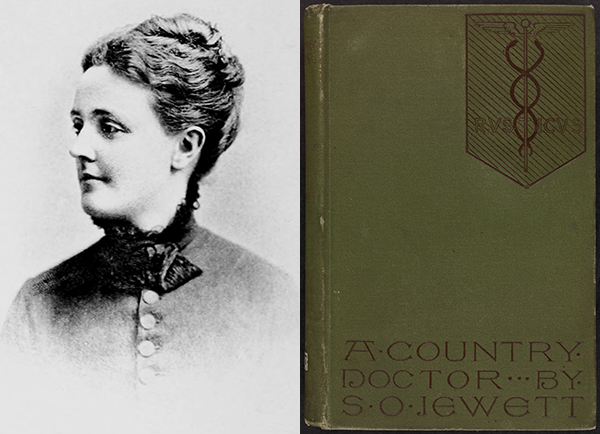 Sarah Orne Jewett wrote “A Country Doctor,” part of the movement to reclaim the definition of a woman physician.She also will be looking for references to herbalists or botanists, both of whom often grew and distributed pennyroyal or other poisons used to induce miscarriages. “A Country Doctor” author Sarah Orne Jewett wrote another novel, “The Country of the Pointed Firs,” which featured an herbalist often seen growing and collecting pennyroyal and giving whispered instructions to visitors who came to purchase it.
Sarah Orne Jewett wrote “A Country Doctor,” part of the movement to reclaim the definition of a woman physician.She also will be looking for references to herbalists or botanists, both of whom often grew and distributed pennyroyal or other poisons used to induce miscarriages. “A Country Doctor” author Sarah Orne Jewett wrote another novel, “The Country of the Pointed Firs,” which featured an herbalist often seen growing and collecting pennyroyal and giving whispered instructions to visitors who came to purchase it.
“Knowing about pennyroyal and how it was used led readers at that time to know the herbalist was an abortionist, so I’m hoping to find some connections like that,” Jessee said.
Finding a balance
Jessee said understanding depictions of women physicians in the 19th century will better enable her to understand the struggle of Victorian women to exist in the professional world.
“These later authors were writing about the types of things women were working against,” Jessee said. “The ideas that women weren’t tough, weren’t smart and should be in the home in order to reproduce and further civilization.”
This fall, Jessee is teaching a special topics course, EH 427/527 Medical Women in American Literature, based on the research she is doing for “Murderess to Doctress.”
